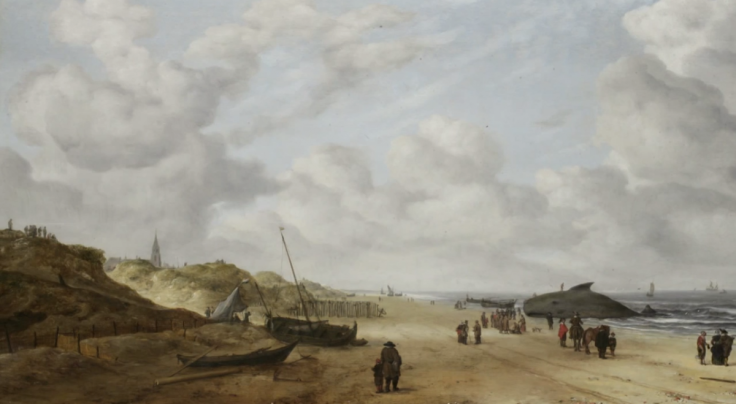Beached Whale Surfaces on 'View of Scheveningen Sands' Painting after 150 Years

An image of a beached whale, hidden for at least 150 years in a painting, has been revealed when art conservators cleaned a 17th-century Dutch seascape which featured in the artwork.
The work, "View of Scheveningen Sands," painted by Hendrick van Anthonissen around 1641, shows groups of people gathered on a beach in The Hague in the Netherlands.
"It seemed a very unassuming painting depicting a very calm beach scene set in winter," Shan Kuang, a conservation student at the University of Cambridge's Fitzwilliam Museum, said after the discovery.
"There were clusters of people gathered. I was unclear why they were there, but it didn't seem too out of normal.
"As I worked across the surface a man appeared – and then next to him a shape that looked like a sail.
"By this time I could also make out an area of the sea which had been painted more crudely than the rest of the ocean. It was a thick layer of repaint covering a large section of original artwork. At the end of the treatment, the whale had returned as a key component of the composition, just as the artist had intended."
The student continued: "It's important that we are true to the artist's intentions. After establishing that Anthonissen had not made this alteration himself, the decision was made – in conjunction with curators at the Fitzwilliam – to uncover the original paint hiding beneath the repaint.
"Removing repaint has its uncertainties: you don't always know how easily the paint can be removed or the condition of the original painting beneath the overpaint.
"I was able to remove the overpainting by scraping with a scalpel and using carefully chosen solvents. I had to proceed very gently and often work under the microscope to ensure no damage was done to the painting. It was very satisfying to see the whale slowly appearing."
View of Scheveningen Sands is on permanent display at the Fitzwilliam Museum.
© Copyright IBTimes 2025. All rights reserved.






















